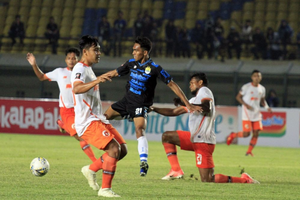Medical problems in American football contain an enormous number of well-being chances related to taking an interest in the game. Wounds are moderately normal in American football, because of their temperament as a full-contact game. Wounds happen during both practice and games. truc tiep bong đá A few elements can influence the recurrence of wounds: epidemiological investigations have shown more seasoned players can be at a more serious gamble, while equipment and experienced mentors can diminish the gamble of injury. Normal wounds incorporate strains, hyper-extends, cracks, separations, and blackouts. Blackouts have turned into a worry, as they increment the gamble of dysfunctional behaviors like dementia and ongoing horrible encephalopathy (CTE). In individual associations like the National Football League (NFL) and National Collegiate Athletic Association (NCAA), a public physical issue report is distributed containing all harmed players in a group, their physical issue, and the game-day status of every player.

Disastrous wounds characterized as genuine injury to the spine, spinal rope, or cerebrum and fatalities are extraordinary in football; both have become more uncommon since the 1970s, albeit few of them happen every year. The two blackouts and disastrous wounds can be brought about by helmet-to-helmet crashes as well as an effect against the ground or other players’ knees; in different cases, they can be brought about by players who have supported a head injury getting back to play, which can put the player in danger of supporting an extreme injury. Despite the reduction in devastating wounds, a more noteworthy number of NFL players have announced significant wounds and abbreviated professions since the 1970s, to some extent because of the rising size and speed of players and the utilization of fake turf.
Generally speaking, wounds supported while playing can cause long-haul harm. Notwithstanding neurological harm brought about by hits to the head, wounds to the mid and bring down the body can drive players to resign or prompt annoying sicknesses in later life. Different strategies have been utilized to diminish wounds in football, including rule changes like the nullification of huge wedge arrangements; a sharp decrease in cervical spine wounds since the 1970s has been ascribed to decide changes that adjusted obstructing and handling methods. All the more as of late, rule changes to shield players from head wounds have been organized. Equipment like the football helmet and cushions are utilized to provide players with a degree of assurance from wounds, while different factors, for example, projection size are utilized to limit the gamble of wounds because of field condition.
The most widely recognized kinds of wounds are strains, hyper-extends, wounds, cracks, disengagements, and blackouts. As per the NFL Physicians Society, the most well-known wounds in football are “blackouts, gruff wounds to the chest like cardiovascular wounds, aspiratory injuries, broken ribs, stomach wounds, splenic slashes, and kidney wounds.” Orthopedic wounds to the knee, foot, lower leg, shoulder, neck, and back are additionally normal, as are muscle strains to the hamstrings, quads, calves, and midsection.
Blackouts are especially unsettling, as rehashed blackouts might build an individual’s endanger in later life for ongoing awful encephalopathy (CTE) and emotional wellness issues like dementia, Parkinson’s infection, and despondency. Blackouts are regularly brought about by helmet-to-helmet crashes, sway against the ground or other players’ knees, and chest area contact between rival players. Nonetheless, helmets have forestalled more genuine wounds, for example, skull cracks. Cervical spine wounds can be horrendous, yet have forcefully declined since the mid-1970s because of rule changes and further developed exercise routines, equipment, and training.
